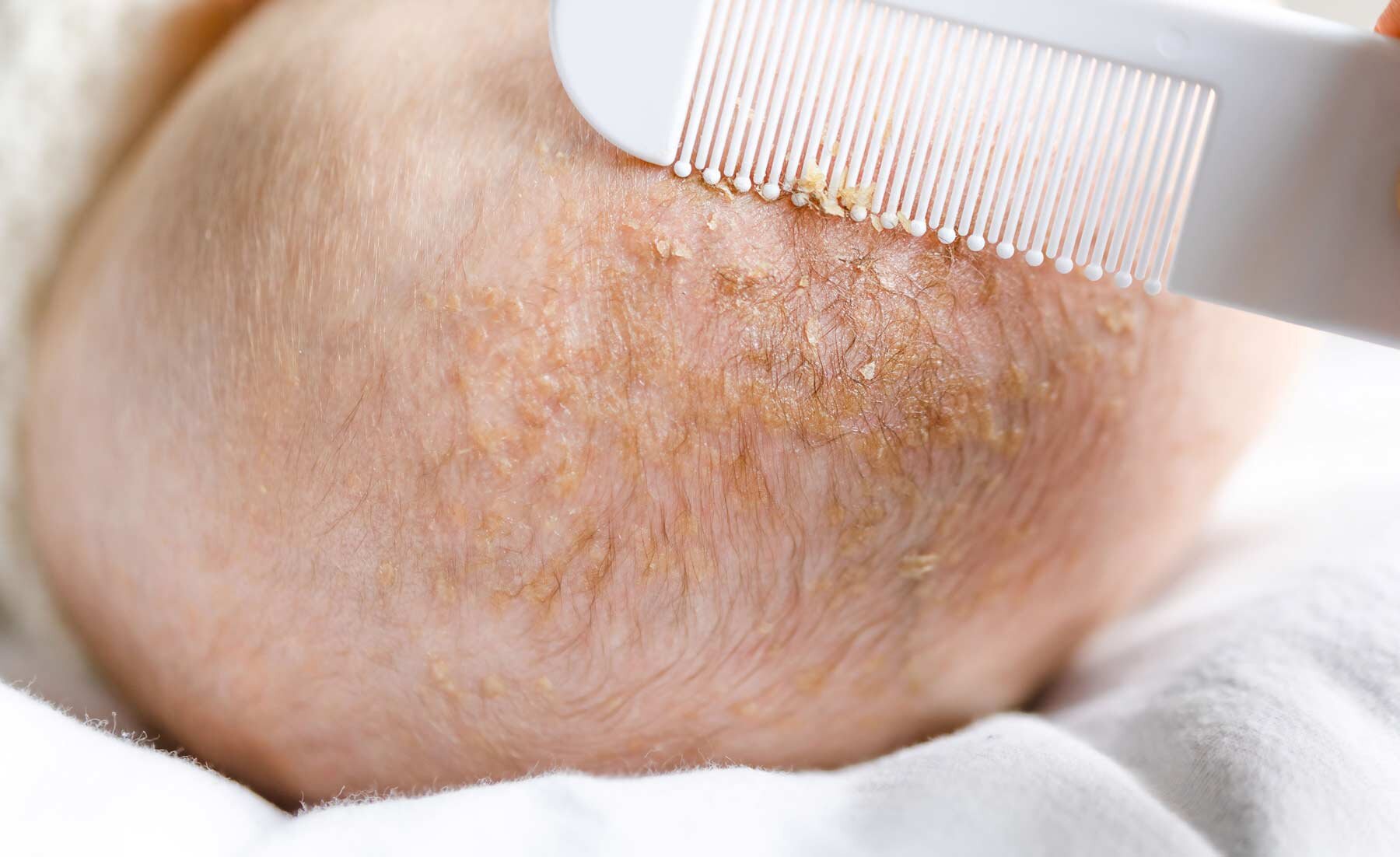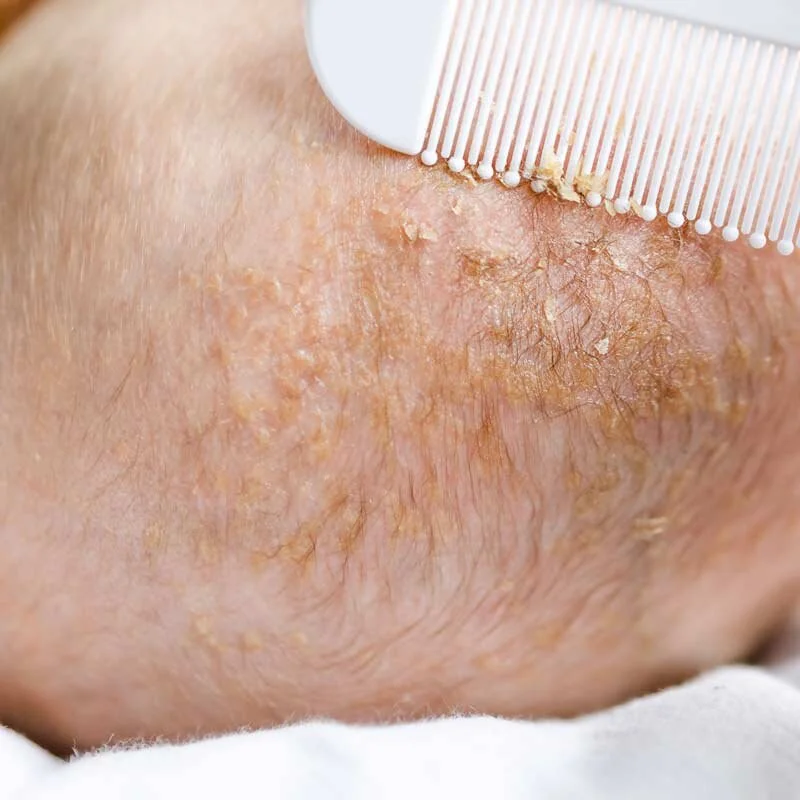
Cradle cap
Cradle cap is a common skin condition that affects newborns and infants. It is characterized by thick, crusty scales on the scalp that may be red or yellow in color. Cradle cap is not contagious and is not a serious health condition, but it can be unsightly and may cause some discomfort for the affected infant.
Cradle cap is thought to be caused by an excess of oil on the scalp, and is more common in infants who have a family history of eczema or allergies. It is typically seen in infants between the ages of 2 weeks and 3 months, and may resolve on its own within a few months.
Symptoms of cradle cap may include thick, crusty scales on the scalp that may be red or yellow in color, as well as flakiness and dryness on the scalp. In some cases, cradle cap may spread to other areas of the body, such as the face, neck, or diaper area. Cradle cap is generally not itchy or painful, and does not cause any discomfort for the affected infant.
Treatment for cradle cap typically involves gently cleansing the scalp with a mild baby shampoo and using a soft brush or comb to remove the scales. In some cases, a dermatologist may recommend using a medicated cream or lotion to help soften the scales and make them easier to remove.
It is important to avoid using harsh soaps or hair care products on an infant's scalp, as these can strip the scalp of natural oils and may worsen cradle cap. It is also important to avoid picking or scratching at the scales, as this can cause irritation and may lead to infection.
In most cases, cradle cap will resolve on its own within a few months, and no treatment is necessary. If cradle cap persists or is accompanied by other symptoms such as redness or scaling, it is important to see a healthcare provider for evaluation and treatment.
By taking care to gently cleanse and care for an infant's scalp and avoiding the use of harsh products, you can help to manage cradle cap and promote healthy skin. If you have concerns about cradle cap or any other changes in your infant's skin, it is important to see a healthcare provider for evaluation and treatment.

